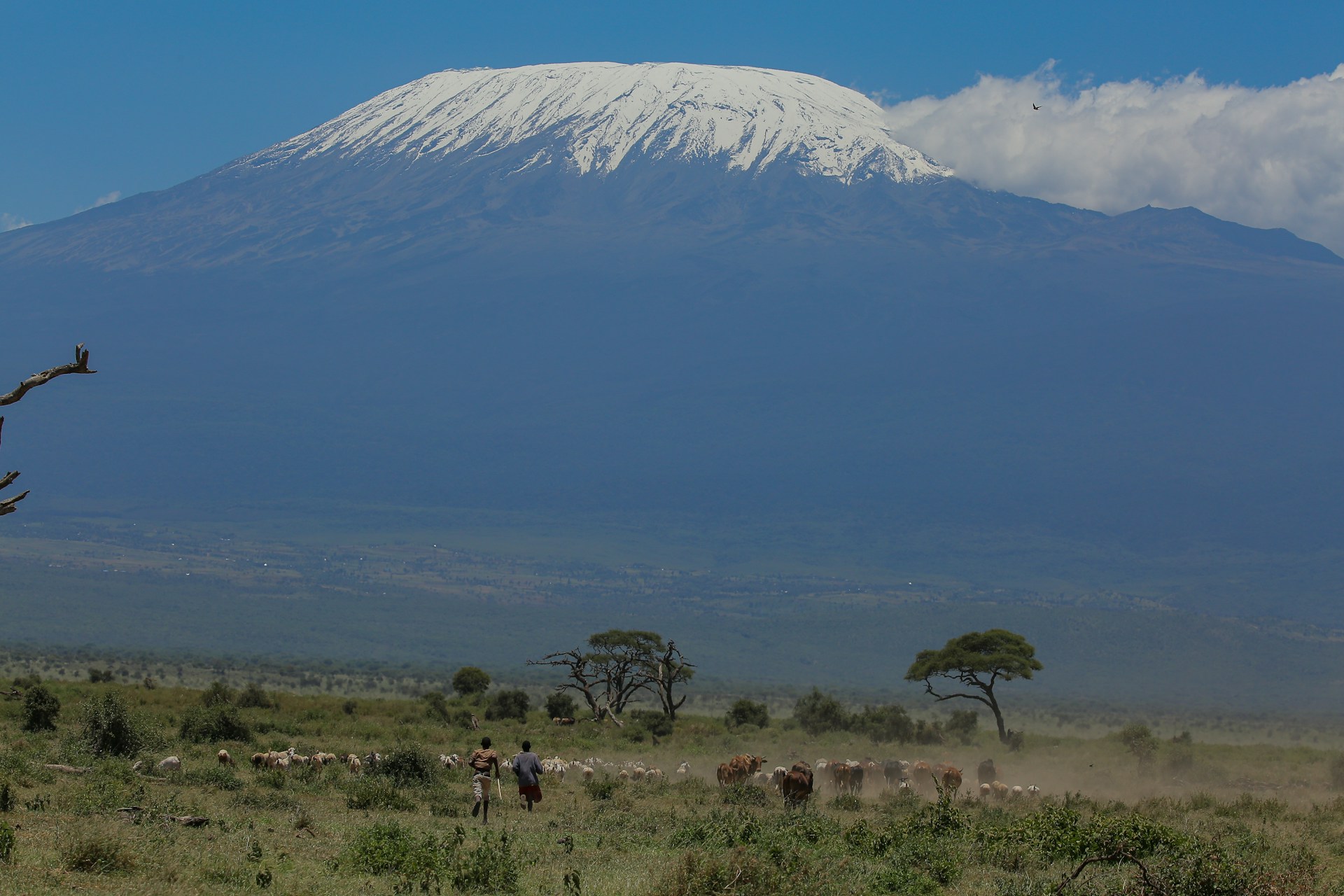
Ultimate Guide to Trekking Mount Kilimanjaro
Whether it’s wanderlust, curiosity, a bucket list, or the all-too-relatable itch for a vacation, many possessed by the spirit of adventure set off on a journey to summit the tallest mountain in Africa, Mount Kilimanjaro.
Soaring over 5,895 meters (19341 feet) and being one of the seven summits, Trekking Mount Kilimanjaro is a welcome challenge for experienced mountaineers and an intimidating task for beginners. However, if you ask anyone who has successfully touched the ‘Roof of Africa’, they’ll tell you, you’re in for a surprise.
Kilimanjaro is a mountain of paradoxes. It is the easiest of the seven summits, but you’ll find top-of-their-game 20 and 30-year-olds unable to reach the summit. It is a relatively accessible mountain with no technical climbs. Yet, its success rate, at times, says otherwise.
Still, climbing Mount Kilimanjaro is a rewarding experience and a once-in-a-lifetime adventure. The trek takes you through different climate zones, offering breathtaking views and captivating sites, while showcasing some enchanting African wildlife.
This Mount Kilimanjaro trekking guide will teach you everything you need to know so you can Summit Kilimanjaro with confidence.
But first…
Why Trek Mount Kilimanjaro
Rising majestically from the plains of East Africa, Mount Kilimanjaro is more than just Africa’s tallest peak; it’s an icon of adventure. As one of the famed Seven Summits and the world’s tallest free-standing mountain, Kilimanjaro offers a once-in-a-lifetime trekking experience that blends natural beauty, cultural significance, and personal triumph.
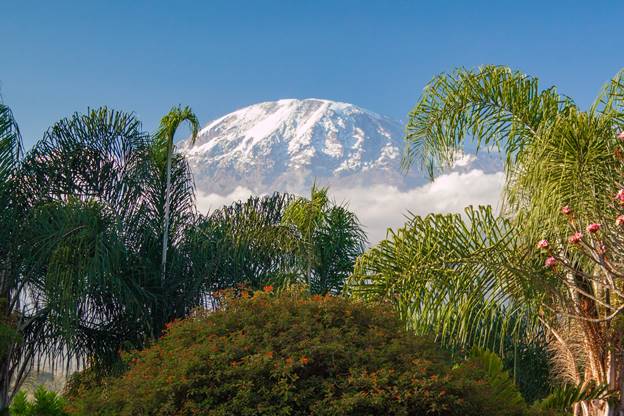
The journey up its dormant volcanic slopes leads you through five distinct climate zones, from lush rainforest to alpine desert and finally to the icy summit. Along the way, trekkers encounter stunning vistas, rare wildlife, and quiet moments of awe that few places on earth can match.
And on a personal level, trekking Kilimanjaro -
- Makes you physically and mentally fitter
- Gives you a sense of accomplishment
- Helps you forge stronger bonds with friends, family, or colleagues
- Provides you with fantastic spots to take cool photos
- Let's you see some of the world’s strangest flora and fauna
Additionally, Kilimanjaro majestically stands out in the landscape, surrounded by vast plains, grasslands, and savannahs. Nestled in these surrounding landscapes are some of the best East African hidden gems.
To the southwest, you’ll find the Amboseli. A serene national Park in Kenya where you can view big game juxtaposed against the backdrop of Mount Kilimanjaro.
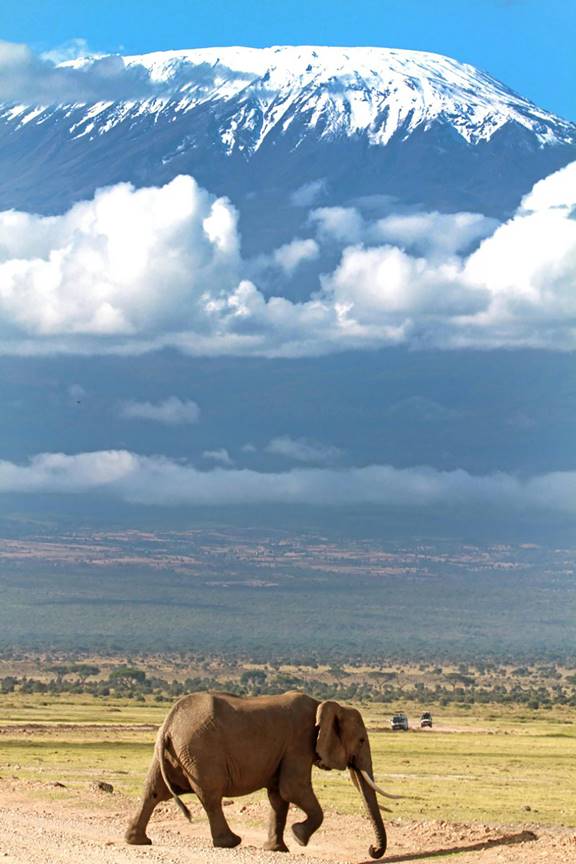
Closer to the Mountain is Ngorongoro Crater and Arusha National Park. These two carry a captivating visual contrast with Kilimanjaro as the background.
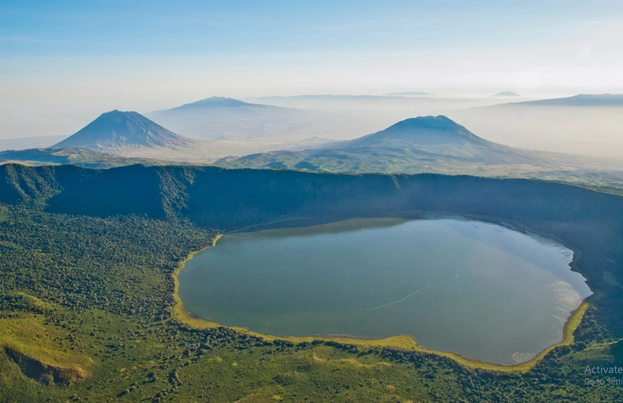
These parks and popular attractions add to the allure of a Mount Kilimanjaro trekking tour, as there’s more to do before or after the expedition. The Mountain’s unique positioning allows you to have a grand safari and mountain-climbing adventure in East Africa.
How to Get to Mount Kilimanjaro
The road to climb Mount Kilimanjaro is connected to various international and regional routes. Whether you’re coming from Asia, the Americas, Europe, Australia, or other parts of Africa, you can find an entry point to the tallest Mountain in Africa. The route you choose will depend on time, budget, and adventure preference.
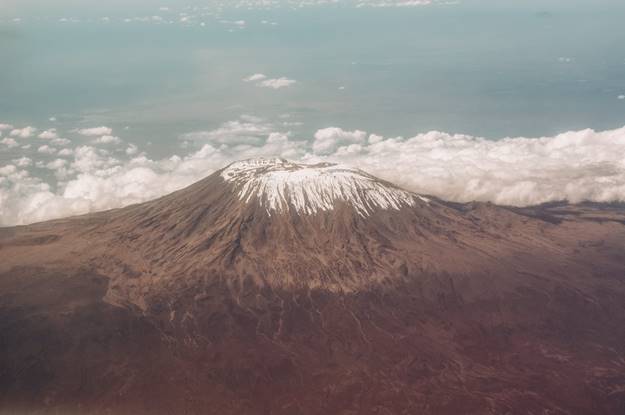
Kilimanjaro International Airport (KIA) – 51 KM to Mt Kilimanjaro
A flight to Kilimanjaro International Airport is the most direct way to reach the mountain. Kilimanjaro Airport is located between the Tanzanian cities of Arusha and Moshi. Once you touch down on KIA, it is a short drive to either Moshi or Arusha, where your Mount Kilimanjaro trek begins.
Kilimanjaro International Airport is serviced by several international airlines, like
- Qatar Airways
- Turkish Airlines
- KLM Royal Dutch Airlines, and
- Kenya Airways, among others
However, if your airline doesn’t offer direct flights to KIA, connecting through Dar Es Salaam, Addis Ababa, or Nairobi is a good alternative.
Julius Nyerere International Airport (DAR) – 470 KM to Mt Kilimanjaro
The international airport in the Tanzanian capital, Dar es Salaam, is a great entry point to commence your Mount Kilimanjaro climb. From here, you can take a connecting flight to KIA or take a scenic road trip to Moshi or Arusha.
Jomo Kenyatta International Airport (JKIA), Nairobi, Kenya – 310 KM to Mt Kilimanjaro
Nairobi is a great entry point to Kilimanjaro for those looking to explore Kenya and Tanzania. As the largest airport in East and Central Africa, JKIA offers a wider range of flight options and connections. Once here, you can choose to connect to Kilimanjaro International Airport or take an overland journey to Mount Kilimanjaro.
Our Mount Kilimanjaro trekking tours start in Nairobi and end in Moshi/Arusha by road. It’s a 5- to 6–hour road trip that lets you get acquainted with the landscapes and cultures of the two sister countries.
Ground Transportation to the Mountain
Once you’re in Moshi or Arusha, your tour operator will handle the transfer to Machame, Lemosho, or Marangu gates. In most cases, your tour operator will handle both airport and mountain transfers as part of your Kilimanjaro tour package.
Travel Tips
- Visa Requirements
You can obtain a visa upon arrival in Tanzania or apply for one online through the eVisa system. That said, it’s recommended you apply for the visa online so you can address any problems that may hinder the trek up Mount Kilimanjaro.
- Vaccinations
Travellers from yellow fever risk countries may be required to carry a yellow fever vaccination certificate.
- Arrival Timing
Arrive in Tanzania or Kenya a day before your trek begins to rest, acclimatise, and handle any unexpected travel delays. We recommend an overnight stay in Moshi, Arusha, or Marangu town.
Mount Kilimanjaro Guided Treks
On Mount Kilimanjaro, guided treks are a given.
Each year, thousands of trekkers stand at the three gates ready to conquer the highest Mountain in Africa. But they are not alone. Leading the way are their professional guides and experienced porters. Together, they embark on a hike to touch the Roof of Africa.
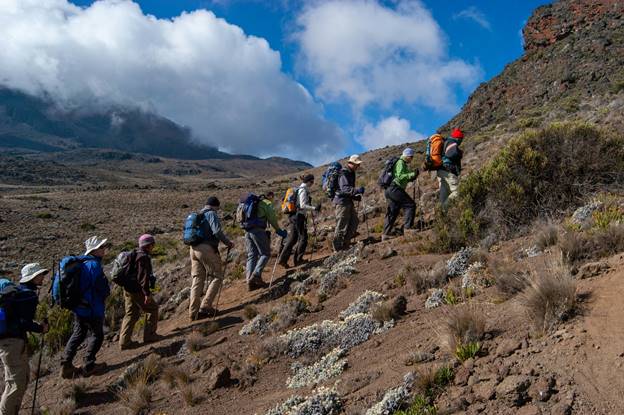
Do You Need a Guide to Trek Mount Kilimanjaro?
Yes, Tanzanian law requires that all trekkers climbing Mount Kilimanjaro be accompanied by a licensed guide. The Kilimanjaro National Park Authority (KINAPA) ensures this law is adhered to by screening all visitors at the routes’ entry gates.
Why You Need a Guide
Apart from being a legal requirement, a guide and, by extension, a support crew serve important purposes.
Mt Kilimanjaro guides -
- Keep everyone safe
- Minimize the risks involved in hiking Mount Kilimanjaro
- Ensure that all park rules and regulations are followed
- Provide medical support and monitor the trekkers’ health
- Help trekkers acclimate properly
- Provide emotional support and boost morale
On the other hand, the porters and cooks will take care of most of the hard work.
They –
- Carry most of the luggage so you only concentrate on the climb
- Run up ahead and set up tents in the designated campsites
- Prepare meals
- Look for water and take care of logistics during the trek
Needless to say, the support crew is an integral part of trekking Mount Kilimanjaro.
Your tour operator puts together the support crew and takes care of the paperwork, including entry fees, tents, and food.
Choosing the Right Trekking Operator
A tour operator can either make or break your trip. That is why it is important to research your Mount Kilimanjaro tour operator before booking.
Look for companies with a proven safety record, experienced local guides, sustainable practices, and strong ethical treatment of porters.
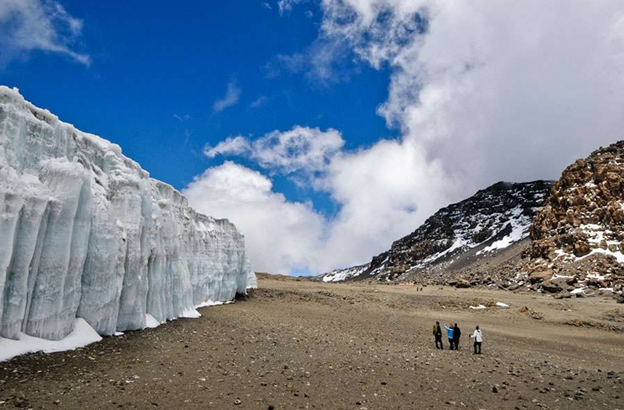
Choosing Between Local vs International Operators
When booking a Mount Kilimanjaro trek, you’ll find three main options: independent local guides, local tour operators, and international travel companies. Each choice has its perks and drawbacks. Your choice depends on your budget, comfort level, and how hands-on you want your planning to be.
Here’s how they compare:
| Feature | Independent local guide | Local Tour Operators/Companies | International Tour Companies |
| Cost | Lowest prices | Budget-friendly with a wide range | Highest prices due to overhead |
| Communication | Often trilingual (tribal language, Swahili, English) | Most guides speak English and Swahili; some offer French, German, or Spanish. | Multilingual, often tailored to the client’s country of origin |
| Experience Style | Highly personalized | Personalized with more logistical support | Standardized but consistent experience |
| Trek Options | Solo, private, and group treks | Solo, private, and group treks | Mostly group treks, sometimes with private upgrade options |
| Gear Provided | May not include camping or climbing gear – requires rental | Usually includes camping gear. Climbing gear rental required. | Typically includes both camping and climbing gear |
| Refunds & Insurance | Rarely offer formal refunds or insurance policies | Refunds and partial compensation are common; insurance varies | Strong refund, cancellation, and insurance policies |
| Licensing & taxes | Some may be unregistered and avoid taxes | Registered and compliant with Tanzanian regulations | Compliant and tax-paying through local partners |
| Food Quality | Varies. Food supplies and cooking equipment depend on the guide’s resources. | Generally reliable with trained cooks and fresh supplies | High-quality meals with dietary accommodations available |
| First Aid & Safety Equipment | May not carry full first aid kits, pulse oximeters, or emergency oxygen; limited training. | Basic first aid kits, pulse oximeters, and some staff are trained in mountain first response. | Comprehensive safety protocols with trained guides, medical kits, supplemental oxygen, and evacuation plans. |
Key Insights:
- Local guides are best for budget-conscious adventurers seeking a personal touch and don't mind handling logistics.
- Local operators offer a good balance of affordability and service, often partnering with registered porters and licensed staff.
- International companies provide a more premium, hands-off experience with better pre-trip support, but at a significantly higher cost.
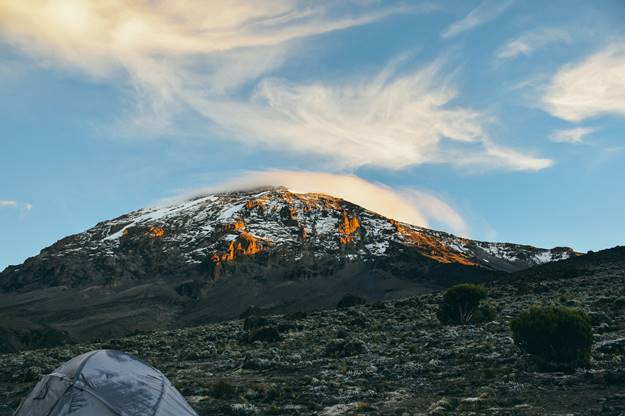
No matter who you choose, remember that all Mount Kilimanjaro hikes are legally required to work through a licensed local operator. Even international companies subcontract to local ground teams for guiding, porters, logistics, and support.
Mount Kilimanjaro Difficulty
Although Kilimanjaro is considered the easiest of the seven summits, reaching its summit is no small feat.
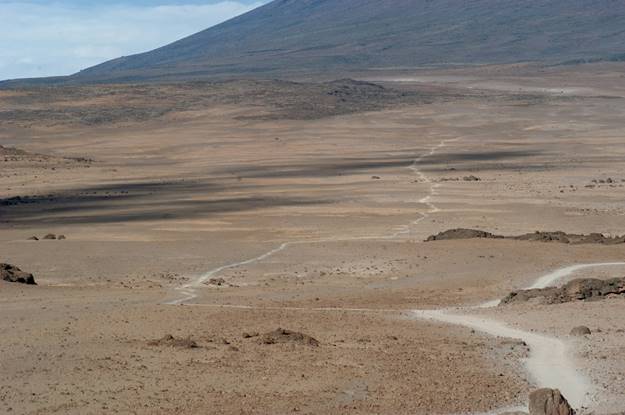
How Hard Is It to Climb Kilimanjaro?
The difficulty in trekking Mount Kilimanjaro lies in its demand for endurance and adaptability. Sure, you don’t have to worry about vertical walls, ropes, or ice axes, as there’s no technical climbing required. However, you do need mental strength, the ability to adapt to altitude, and endurance especially for the summit push.
Who Can Climb Mount Kilimanjaro?
Anyone with a good level of fitness and mental resilience can successfully summit Kilimanjaro. If you have good stamina, strength, and mental toughness, then you can make the climb.
Hiking Kilimanjaro is hard, but absolutely doable. Each year, thousands touch Africa’s highest point, from teenagers to retirees.
What Makes Mount Kilimanjaro Hard to Climb?
Altitude
Altitude is your greatest foe when it comes to Kilimanjaro. Most people fail to make it past 3,500 – 4,500 meters (11,483 – 14,764 feet) due to altitude sickness.
At high altitudes, the air gets thinner due to reduced oxygen. This can lead to altitude sickness, symptoms of which make it challenging to continue trekking up Mount Kilimanjaro.
Common symptoms include:
- Headaches
- Nausea
- Dizziness
- Loss of appetite
- Sleep disturbances
Altitude affects everyone differently and it isn’t something you can conventionally “train” in. This is the main reason why elite athletes may fail, while retirees and regular hikers succeed.
More on altitude sickness later
Summit Night
After overcoming the challenges of altitude acclimatisation, you need to face Kilimanjaro’s ultimate test: summit night. The final summit push starts around midnight in dark, cold, and windy conditions. You make your way through the dark, climbing steep switchbacks over loose scree with nothing but headlamps to light your way.
On a clear, moonlit night, however, the final push becomes a little less arduous and more magical. Such a night can significantly illuminate the trail, thus reducing the psychological strain and negating the need for headlamps.
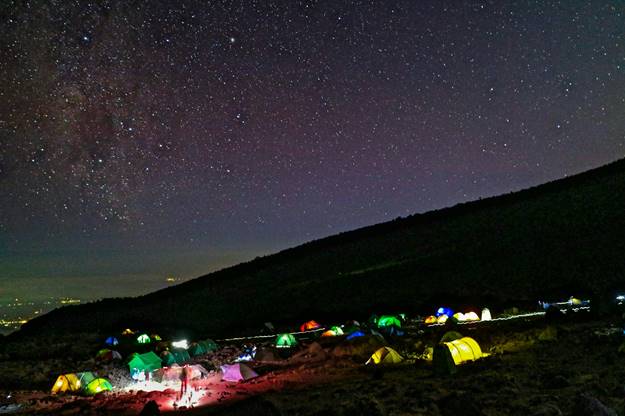
All in all, it’s a gruelling trek that breaks many people. But those who manage to push through are rewarded with a victorious sunrise at Uhuru Peak.
Trek Duration & Fatigue
Usually, treks on Mount Kilimanjaro take 5 -9 days, depending on the route taken. This is quite a prolonged exposure to cold, thin air, and limited comforts.
Weather Conditions
The weather on Kilimanjaro can switch from tropic hot to freezing cold within the same day. One moment you can be enjoying a warm trek, then the weather turns brutal with snow and high winds. This is mainly due to the mountain’s five climatic zones. You will experience each climatic zone on your route up Kilimanjaro.
Mount Kilimanjaro Trekking Routes
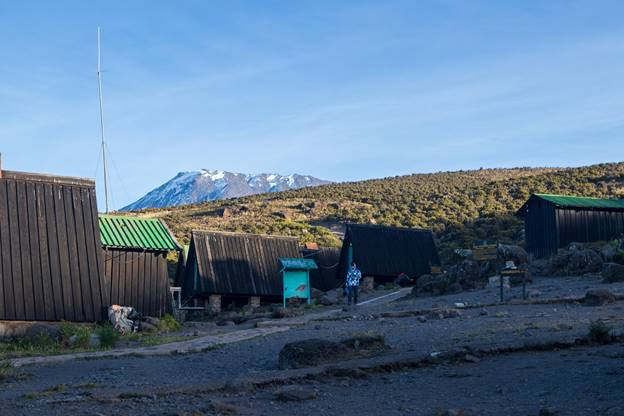
There are primarily seven Mount Kilimanjaro routes; five popular and two less-known trails. Each route is unique in terms of difficulty, scenery, crowd density, and success rate. So, whether you’re a beginner, an adventure trekker, a solo traveler, a photographer, or a peak bagger, you can find the perfect Kilimanjaro route for your tour.
Here’s a brief comparison of the routes
Kilimanjaro Routes Comparison Table
| Route | Duration (Days) | Difficulty | Scenery | Acclimatisation | Summit Success Rate | Crowd |
| Marangu | 5 - 6 | moderate | Moderate | Poor (fast ascent) | 50 – 60% | High |
| Machame | 6 - 8 | Moderate | Very scenic | Good | 70 – 80% | High |
| Lemosho | 7 - 8 | Moderate - challenging | Exceptionally scenic | Excellent | 80 – 90% | Moderate |
| Rongai | 6 - 7 | Moderate | Less scenic (high wildlife chance though) | Fair | 70 – 90% | Low |
| Umbwe | 5 - 6 | Very challenging | Dramatic views | Poor | 50 – 65% | Low |
| Shira | 6 - 8 | Moderate - challenging | Scenic | Good | 60 – 80% | Moderate |
| Northern Circuit | 8 - 9 | Challenging | Outstandingly scenic | Excellent | 90% | Very low |
Most Popular Kilimanjaro Routes
Marangu Route
Also known as the Mount Kilimanjaro Coca-Cola route, Marangu is the oldest route on the mountain. It is also the only route with accommodation huts. Trekkers using this route are required to sleep in the dormitory-style huts at the campsites.
Although many regard it as an easy route, it has one of the lowest summit success rates due to rapid ascent. It is also cheaper than other routes. Therefore, a Marangu tour is great for experienced climbers and those on a tight budget. Marangu is also the only route that follows the same path up and down.
Machame Route
Once a rugged wilderness trail, the Machame route is now the most popular route up Kilimanjaro. Nicknamed the “Whiskey Route” in contrast to the easier “Coca-Cola Route” of Marangu, it hints at the challenge it presents.
A Mount Kilimanjaro Machame tour is a top choice thanks to its scenic beauty, varied landscapes, and well-balanced difficulty. Trekkers are treated to sweeping views of the Shira plateau and the dramatic ascent of the Barranco Wall. Additionally, Machame’s “climb high, sleep low” profile makes it ideal for acclimatisation, making it a rewarding choice for those seeking a beautiful yet challenging trek.
Lemosho Route
Originally developed to ease congestion on the Machame Route, the Lemosho Route has steadily gained popularity over the years. Its scenic landscapes, gradual acclimatisation profile, and high summit success rate make it an excellent choice for trekkers of all experience levels. There are also higher chances of spotting wildlife, such as buffalo and monkeys, especially during the early stages.
If you want to experience the most out of Kilimanjaro while getting a great balance of scenery, difficulty, and acclimatisation, then a Lemosho tour is for you. This is also one of the best Kilimanjaro routes for beginners.
Rongai Route
As the only route approaching from the north side, near the Kenyan border, the Rongai route offers a unique hiking experience. Since the route is on the leeward side, it is much drier and less forested compared to the southern routes like Machame and Lemosho.
If you’re looking for a quieter trekking experience with a fair acclimatisation, then a Rongai tour is the way to go.
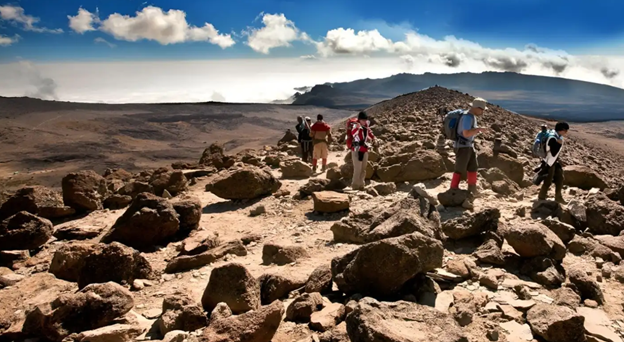
Northern Circuit
As the longest and most remote route for trekking Kilimanjaro, the Northern Circuit is excellent for solitude and acclimatisation. The trail begins on the western slope, does a half circle at Shira Plateau to approach the summit from the East, then descends on the southern side to Mweka Gate. This gives you 3600 views of Mount Kilimanjaro that few others experience.
Despite being one of the most scenic and successful routes for trekking Mount Kilimanjaro, it is the least used. Wildlife lovers and nature photographers will find this route ideal.
Less Popular Kilimanjaro Routes
Umbwe Route
As the steepest and most direct trekking trail to the summit, the Umbwe route is not generally recommended to beginners. Additionally, its poor acclimatisation profile, densely forested trail, and low success rate make it risky for unprepared climbers
Despite its harsh demands, the Kilimanjaro Umbwe Route is surprisingly scenic with dramatic views of the Western Breach and Barranco Wall. The route is also quiet and ideal for solitude.
Shira Route
The trek on this route begins at 3,600 meters (11,800 feet) which can trigger altitude sickness early. An hour or two into the trek, and you’re already at Shira plateau, one of the highest plateaus in Africa.
Although it has poor acclimatisation and is less scenic at the start, it merges with the beautiful southern circuit later.
Best Time to Climb Mount Kilimanjaro
You can trek Mount Kilimanjaro at any time of the year, but certain months offer better weather, clearer views, and higher success rates.
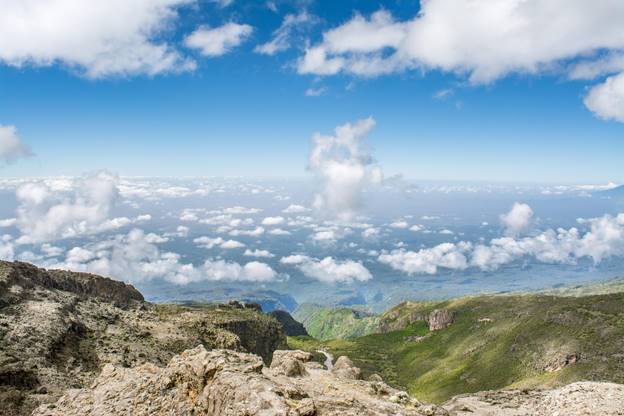
Here’s how to pick the optimal time for your adventure
The Dry Seasons (Best Weather Conditions)
Tanzania experiences two dry seasons which provide the best weather conditions for climbing Mount Kilimanjaro.
January – Mid March
This is the short dry season. It’s characterised by warm days and clear skies, but the temperatures are colder at higher altitudes. If you plan to trek Kilimanjaro during this season, expect agreeable weather and fewer crowds.
June – Early October
This is the long dry season, thus the peak trekking period on Mt Kilimanjaro. These months offer the best weather to climb Kilimanjaro with warmer temperatures, clear skies, and generally stable weather conditions.
Since these are the busiest months on Kilimanjaro, expect high foot traffic on the popular routes. However, the upside to this is that you can easily find tour operators with open groups you can join for a reduced price.
The Wet Seasons (Off-season)
Just like the dry seasons, Kilimanjaro has two wet seasons: a long and a short rainy season. The trail remains open during these months, but expect slippery conditions and reduced visibility.
Mid-March – May
This is the long rains season. There’s usually heavy rain, muddy trails, and dense cloud cover. It is generally not recommended to hike during this season.
Mid-October – November
This is the short rains season. While not as wet as the long rains season, it still isn’t the best time to trek Kilimanjaro. However, the Rongai route and, to some extent, the Northern circuit may offer better trekking experiences since they are on the leeward side.
Shoulder Seasons
A shoulder season is the period that falls between peak and off-peak seasons. Mount Kilimanjaro shoulder seasons offer a balance between pleasant weather and fewer crowds.
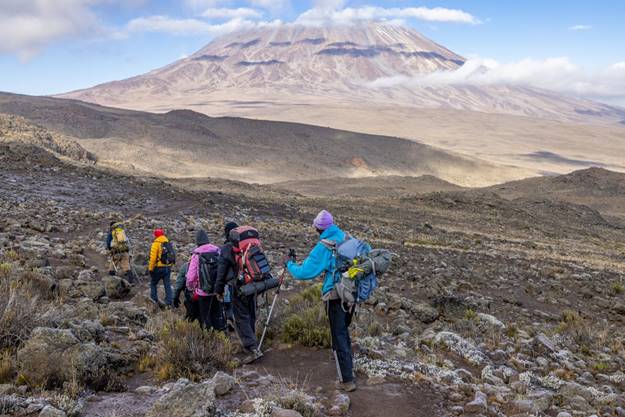
These seasons are;
- Late March – Early April
- Late June
- October
- November – December
Booking a tour for these months means you’re ready for more-than-usual unpredictable weather and tricky trail conditions.
Before you book…
Consider your Priorities:
- Fewer Crowds?
Early March and October offer quieter experiences.
- Best Summit Views?
July - September have the clearest skies at the summit.
- Mild Weather?
Late January and February are the warmest months. Expect warmer weather even at high elevations.
Planning for Your Mt Kilimanjaro Trek
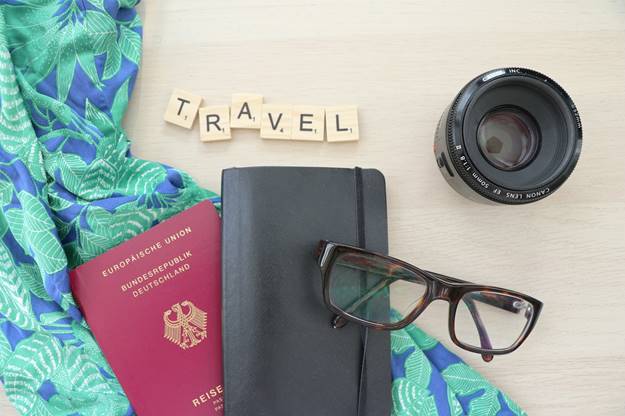
When to Book
It is advisable to book your trek at least 6 months in advance, especially for high season months. This gives you enough time to prepare and train for the trek adequately.
Vaccinations and Health
Visitors travelling from a Yellow Fever risk country are required to show proof of vaccination. If you arrive in Tanzania from such countries without a vaccination certificate, you may be denied entry or required to get vaccinated on arrival at a cost. To avoid delays and other non-compliance issues, ensure you carry a Yellow Fever vaccination certificate or a doctor’s note.
Apart from the Yellow Fever vaccination, there are no other mandatory vaccination requirements when travelling to Kilimanjaro. However, vaccinations for Hepatitis A & B, Polio, Cholera, Tetanus, and Rabies are recommended. Additionally, Malaria precautions are advised for visitors travelling to East Africa.
Trek Length Consideration
If you’re a beginner to high-altitude mountain climbing, it is best to go for 7 – 9-day tours.
Experienced climbers seeking a challenge will find the 5- and 6-day tours on difficult routes to be rewarding.
Preparing for Your Mt Kilimanjaro Trek
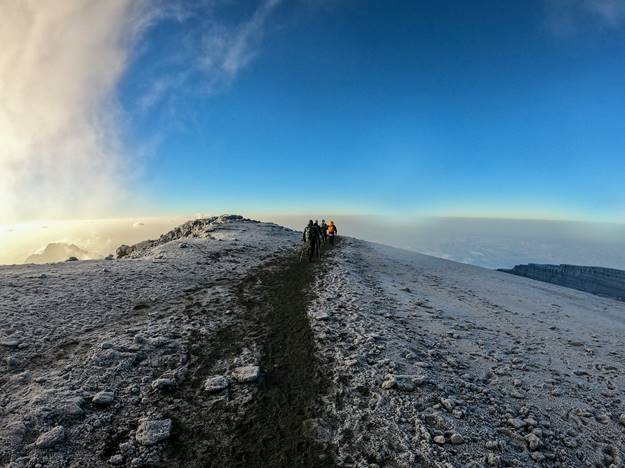
Physical Training
Trekking Mount Kilimanjaro is physically demanding. If you’re not prepared for the altitude, long hiking days, and uneven terrain, your chances of reaching the summit decrease. A good fitness base will significantly increase your chances and make the journey more enjoyable.
How Long Do You Need to Train to Climb Mount Kilimanjaro?
Start training 2 – 3 months before your trek. However, if you’re starting from a lower fitness level, consider beginning your training 3–6 months in advance to achieve better conditioning.
Remember not to push yourself too hard when training for Mount Kilimanjaro. The last thing you want is an injury derailing your date with the summit.
Training Tips
- Simulate trek conditions with long hikes on varied terrain
- If you can, go on hikes that let you gain elevation
- Perform aerobic exercises like walking, running, cycling, swimming, or stair climbing
- Go on long treks with a backpack and gradually increase the weight
- Do exercises that improve your leg strength and core stability, like lunges, squats and planks
Mental Preparation
Kilimanjaro doesn’t just test your physical endurance; it also tests your mental resilience. You’ll need to understand what you’re up against, know the structure of your hiking days, and cultivate a positive attitude.
The best way to prepare mentally for Kilimanjaro is to build up your mental stamina. Train your patience, persistence, and adaptability. Learn to stay calm under pressure, trust your pace, and listen to your body. Most importantly, have the courage to ask for help. Your guides are there to support you.
Gear Checklist
Having the right gear is essential for climbing Mount Kilimanjaro. It is your first line of defense against fatigue, cold, and discomfort.
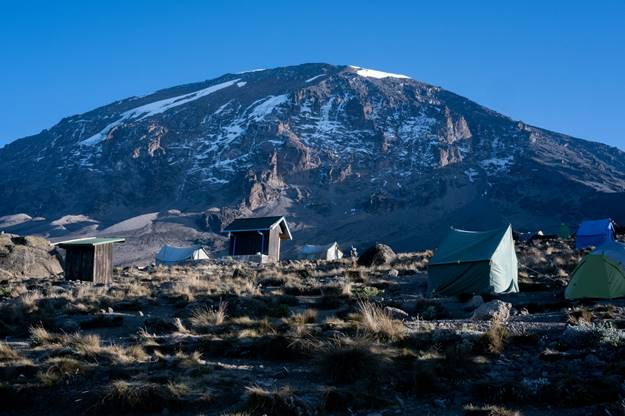
Mount Kilimanjaro Gear Packing List
- A warm sleeping bag.
- Trekking boots that are water proof or Goretex.
- Rain trouser.
- Rain jacket.
- Warm clothing.
- Warm jacket.
- A pair of warm gloves.
- Head light torch.
- Sun cream.
- Trekking poles.
- Gaiters.
- Warm hat or balaclava.
- A hat.
- A pair of sports shoes
- A small day pack bag.
- A big backpack for mountain climbing.
- Water purification tablets.
Here is an exhaustive gear checklist. Talk to your tour operator about what you’ll need to bring and what will be provided.
Altitude Sickness on Mount Kilimanjaro
A Kilimanjaro trek comes with the real risk of Altitude Sickness, also known as Acute Mountain Sickness. The primary cause is rapid ascent. If you gain altitude too quickly, you deprive your body of enough time to adapt to the reduced oxygen levels and lower atmospheric pressure.
Interestingly, the human body is capable of adapting to altitudes of over 5,000 meters (16,404 feet). Case in point, the people of Rio Rinconada, a town in Peru, live comfortably at an elevation of 5,100 meters above sea level.
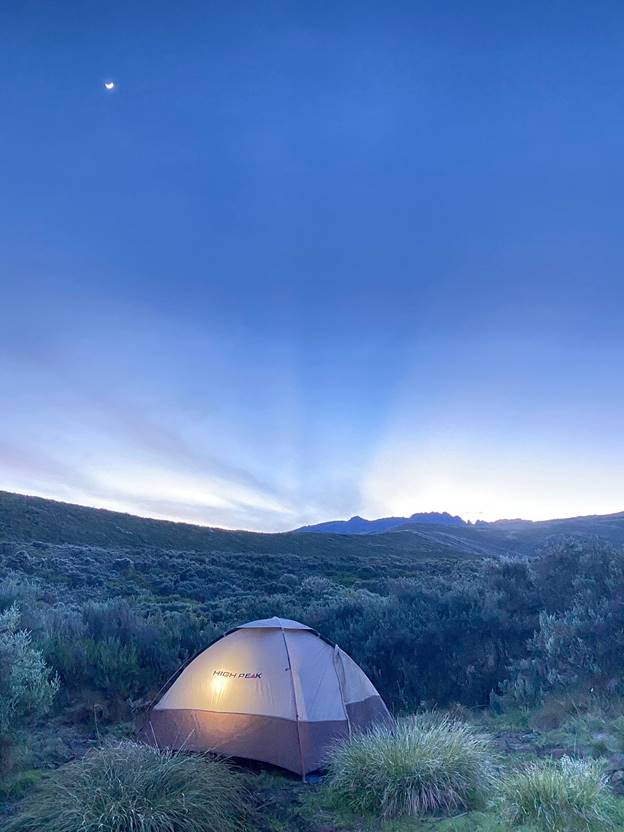
On Kilimanjaro, many trekkers experience mild effects of altitude sickness. Still, it’s essential to understand its symptoms and how to respond well.
Symptoms of Altitude Sickness on Kilimanjaro
- Headache
- Dizziness
- Fatigue
- Shortness of breath
- Nausea
- Loss of appetite
How to Mitigate Symptoms of Altitude Sickness
The best way to prevent altitude sickness is proper acclimatisation. Opting for longer routes with gradual elevation gives your body time to adapt.
Other proven strategies include;
- Following the “climb high, sleep low” principle
- Taking preventative medication like Diamox (under medical advice)
- Staying well-hydrated and eating regularly
- Avoiding alcohol and smoking
- Taking rest or acclimatisation days
Listening to your body and adjusting pace accordingly
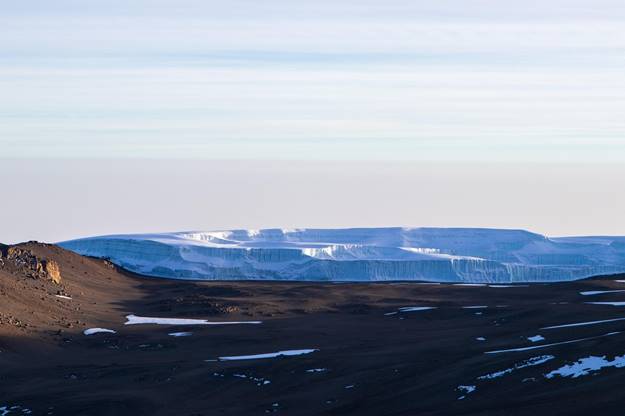
Emergency Descent Protocols
Kilimanjaro guides will call for immediate evacuation or descent if a trekker shows signs of severe altitude sickness. These protocols are also in place for injury or other medical emergencies.
- Immediate descent
- Evacuation stretcher
- Helicopter evacuation (for life-threatening emergencies only)
- First aid certified guides
Mount Kilimanjaro Trekking Cost and Insurance
The cost to hike Kilimanjaro ranges from $1,500 to $ 6,000+ per person.
The absolute cheapest Kilimanjaro tour you can get is around $1,200. However, for this price, you’ll have to fly directly to Tanzania and negotiate with different agencies. Additionally, the trip quality you’ll get will likely be bare bones with minimal comfort or safety provisions.
The best price range for trekking Mount Kilimanjaro is $1,500 - $2,500. At this range, you can be sure you’ll be taken well care of and your assisting crew (porters and cooks) will receive fair compensation. This price range also works great for travelers on a tight budget.
At a $2,500 - $3,500 price range, you can be sure of an airport transfer and superior safety procedures. Companies operating at this price range may offer personal climbing equipment.
Finally, any trek costing more than $3,500 is considered a luxury tour. So, expect high-end climbing and camping gear, gourmet meals, and full emergency response services in your package.
Factors Affecting the Cost of Climbing Kilimanjaro
- Hiking routes
- Tour Duration
- Crew fees
- Park fees
- Food cost
- Camping Gear cost
- Safety equipment cost
Always review your Kilimanjaro trek package carefully to understand what’s included and what’s excluded from the total package cost.
Mount Kilimanjaro Insurance
It is highly recommended that all trekkers hiking Kilimanjaro have travel insurance coverage. Travel insurance covers you from most health and travel emergencies that may occur while you’re in a foreign country.
Mount Kilimanjaro travel insurance ensures you have access to a helicopter evacuation in case of a medical emergency while on the mountain. This is an upgrade from the standard rescue covered by the park fees, which only includes ground rescue.
Apart from medical expenses, a travel insurance may include –
- Personal liability
- Baggage coverage
- Search & Rescue
- Legal Expenses
- Repatriation
- Travel delay, and
- Missed departure, among others
What about Health Insurance?
If your health insurance covers travel activities abroad or high-altitude mountain climbing, then you may not need travel insurance to trek Kilimanjaro. Always confirm the details with your provider.
We recommend WorldNomads and TrueTraveller for your Kilimanjaro travel insurance coverage.
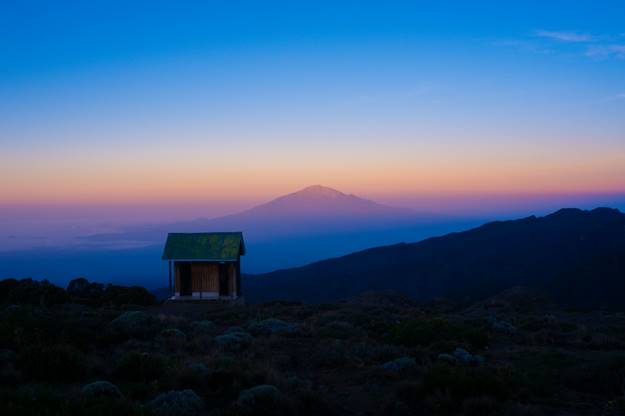
Final Thoughts on Trekking Mount Kilimanjaro
Summiting the highest mountain in Africa isn’t just about high-altitude trekking; it’s a journey of personal achievement, mental resilience, and awe-inspiring landscapes. Whatever it is that draws you to climb Kilimanjaro, be it the scenery, the challenge, or the sheer thrill of standing atop Africa’s highest point, success comes down to preparation, patience, and perspective.
So, take your time. Plan well. Train smart. And when the sun rises over the summit, you’ll know the effort was worth every single step.
Samuel Kanuna
Mt. Kenya Trekking Expert